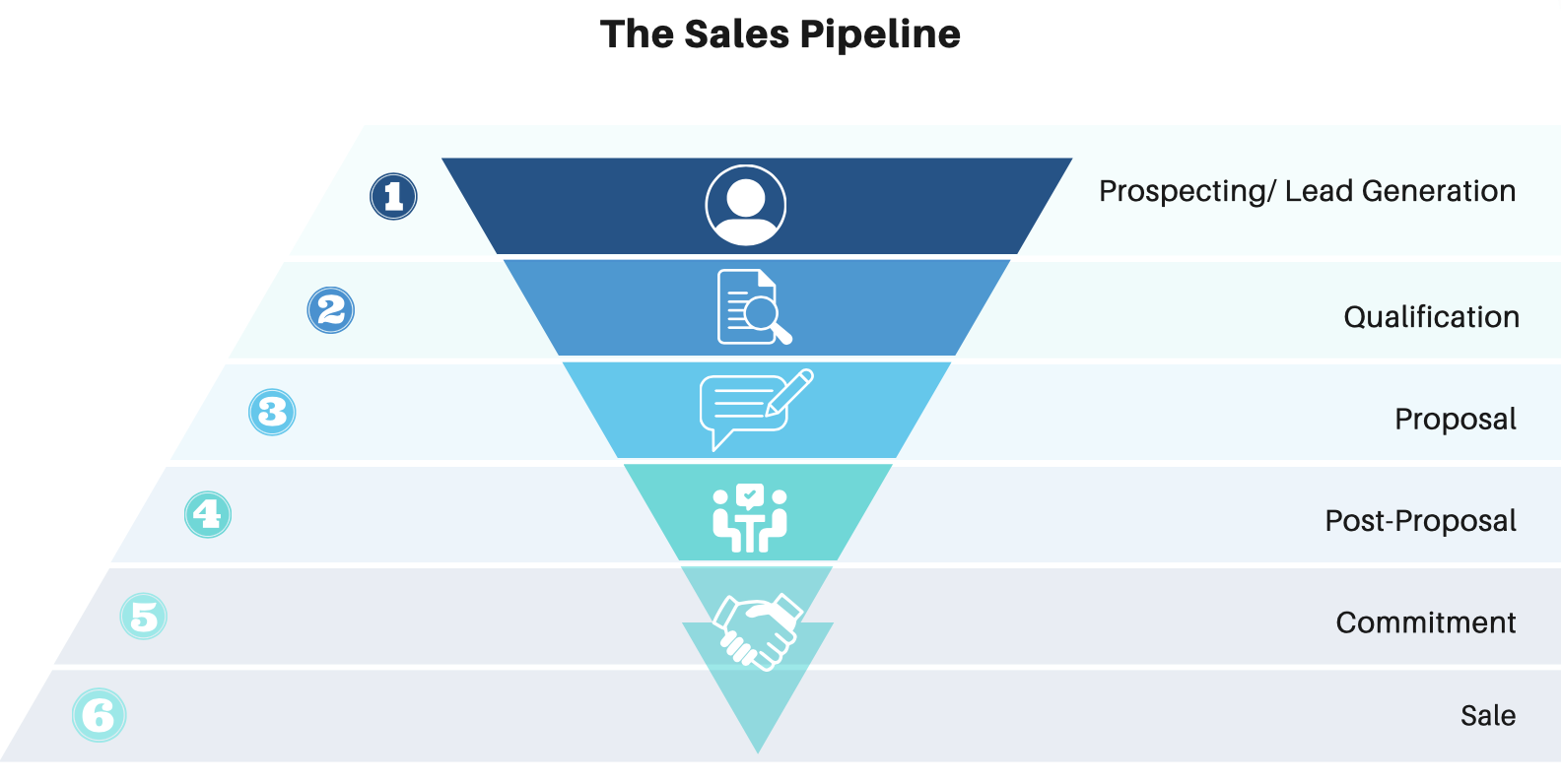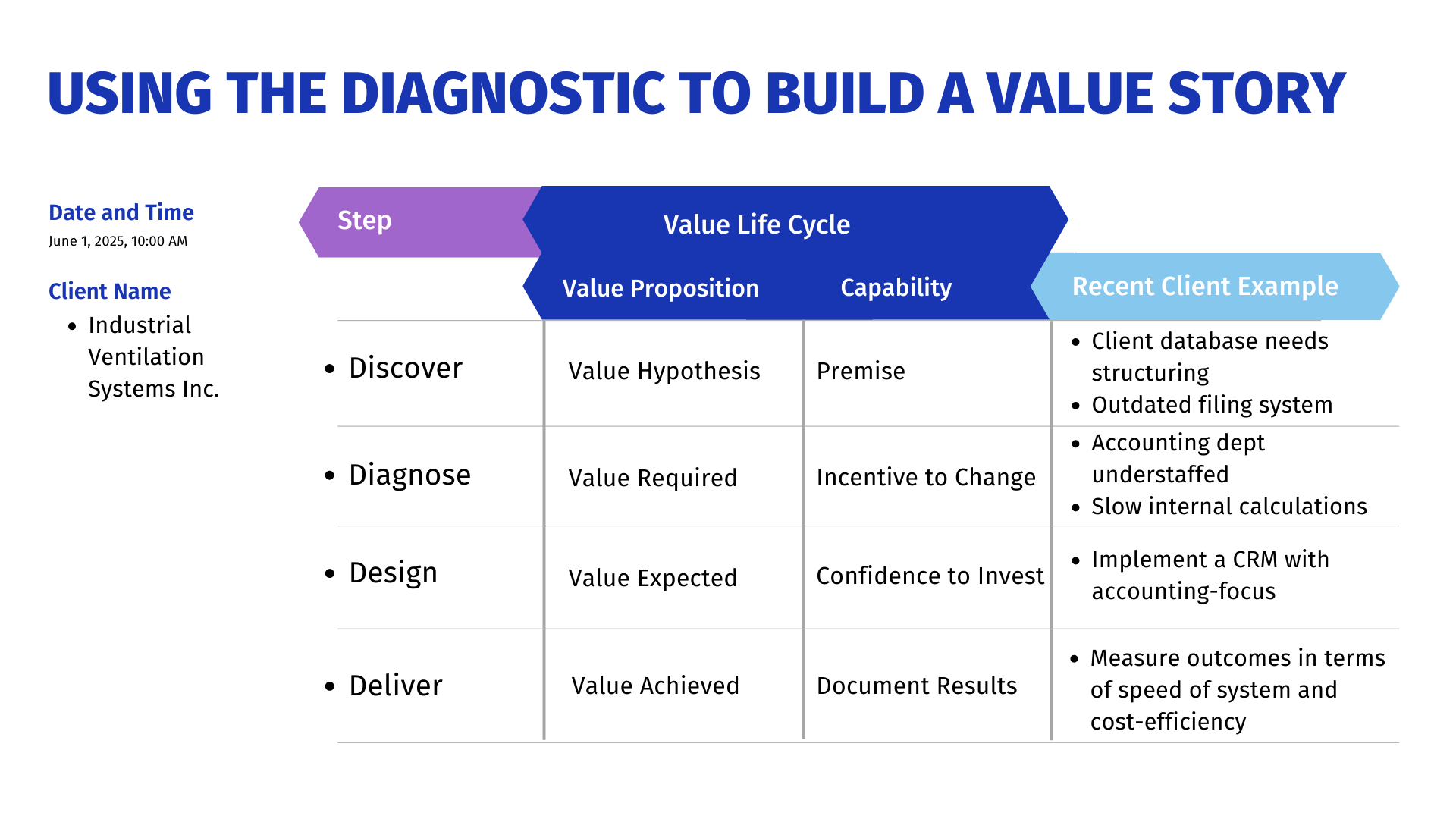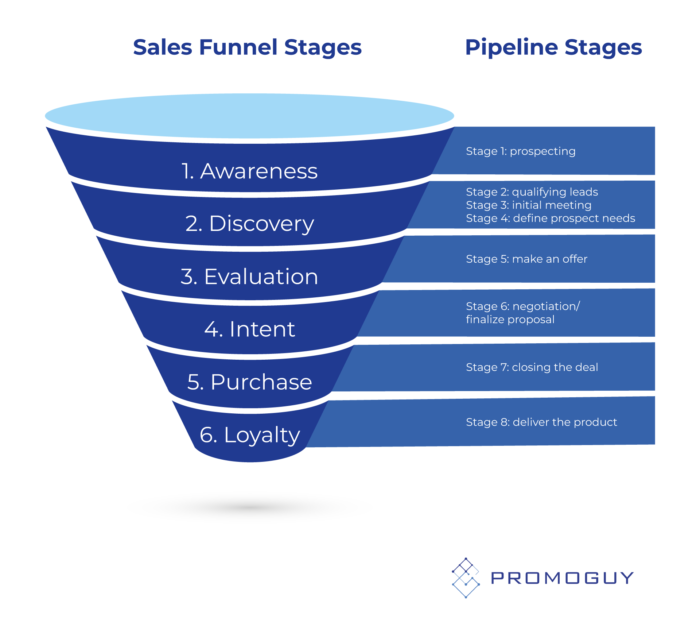Converting leads is a hard task which involves a lot of sales and marketing optimisation. This is especially true of the B2B sector where you will be dealing with a smaller pool of clients with far more rigid standards. This article will show you how you can simplify your sales process to focus on the essentials.
This article will aim to provide you with a robust set of examples of processes you can implement for better integration of sales and marketing.
Sales Discovery Process & Marketing
Sales management is all about setting up a process that leads people from discovery to purchase. However, this can be tricky for B2B companies because the needs of companies are far different.
Marketing and sales intersect in that marketing operations help attract customers while the sales department closes the deal. They work in tandem in a multitude of ways across the sales pipeline.
Here is a sales process flow chart in 6 stages:

Filling the sales pipeline requires marketing, research, and implementation at every stage. There are many regions between finding a lead and acquiring a sale (we’ll dive diver into this below in the funnel strategy portion).
In terms of marketing, promotional activities continue both before the sales process begins and even after the sale. Pre-sales is all about developing any resources that legitimize your company in the eyes of prospects. When your client researches you, they need to have an impression of legitimacy and competence. The elements that build on this include:
- A well-designed website with the right keywords.
- Social media presence with a well-thought-out brand identity.
- Logos, brand elements, and mission/vision statements.
- Practical information like case studies, testimonials, use cases, infographics, brochures etc.
Structuring Sales With a Diagnostic Approach
The diagnostic sales process is a key method for ensuring you match your sales process to ensure you can meet the client’s needs. The process approaches sales like a doctor would diagnose a condition and thus provides a useful workflow for getting to the bottom of an issue collaboratively.
In the example below, imagine you offer “website and personalized CRM-building” services. This is what a simplified diagnostic sales analysis would look like:

In the Discover phase, you analyze the company’s needs and make an assessment. You see what their pain points are and what your idea of a solution could be. Next, you diagnose the issue that is causing the problem (in this case the accounting department is understaffed and the calculation process is slow).
In the Design phase, you take these considerations into account and build a solution around them. Importantly, you also need to consult the client to find out what their scope is before deciding on the ideal solution. In this case, you may find that they cannot afford more staff, which is why you could suggest a CRM with an accounting focus and an in-built filing system to decrease workload.
In the Delivery phase, you establish which metrics you need to measure and judge how much value can/was achieved. This allows you to craft a sales pitch to this client and maybe even future clients with similar needs.
Marketing & Sales Funnel Management
The B2B sales funnel is not that different from the B2C one at first glance, but it requires different operational processes. Here’s how you can manage all of your sales funnel challenges in a step-by-step workflow:

Here are some example strategies for each Sales Funnel stage:
- For the early stages of the funnel, you will be reaching out to companies a lot more. Sales processes will require a hard sell with examples, benefits, case studies, etc. This will allow prospective clients to achieve better awareness and learn your USPs.
- The discovery stage is where the diagnostic method can be very valuable as you need to qualify leads and understand their needs. You then need to evaluate and make an offer.
- Further down the funnel, when the intent of some kind is established, you need to make preparations for building your case. Sometimes this can be done by offering a sample or giving a trial period of your services.
- Once at the purchase stage, you need to balance getting the best deal at the moment with the need for maintaining repeat customership. If your product is one that is very prone to repeat customer business, offer a lowered rate or return incentive. If your product is a once-in-a-lifetime purchase, it would be wise not to. Special offers can build loyalty in the final pipeline stage.
- To truly manage loyalty you should practice customer success management. Give your customers reasons to keep the brand in their mind by building a community, support services, checking in on them, asking for reviews, and keeping them updated on new deals.
Point of Sale Marketing
Now you’re further down the sales process and need to initiate a point of sales tactic. This is the use of an upsell when the customer is about to agree to the sale. Think about how online stores refer another product to you at the check-out page in the hopes you’ll add it to your cart.
In B2B, this can come as part of your package upgrade. For example, if your client wants a series of services, you can offer an extra related service at a discount and see if this piques their interest. It can be a great way to enhance customer value and score some extra revenue from a done deal.
A few ways to engage in Point of Sale tactics:
- Offer discounts for related goods or services to the one’s being purchased.
- Send an email to clients who have shown interest in one service and upsell them on a second one.
- Offer satisfied customers a discount or lower renewal fee on their next purchase.
Sales Pipeline Metrics For Pipeline Efficiency

To properly perform sales performance analysis, you need to look in the right place. Aside from the usual revenue calculations and conversion rates, here are some (lesser-known) metrics for your sales pipeline analysis:
- Sales Cycle Length: An important metric for timing and also future planning with informed sales efficiency.
- Average Sales Cycle Length = Total number of days to close all deals / Total number of deals
- Average Deal Size: The average dollar amount generated per deal that has been closed. It’s important to have a number in mind when evaluating the value of future deals and growth.
- Average deal size = Total sales revenue / Total number of sales
- Return on Marketing Investment (incremental): You should gauge how effective your increase in marketing spending has been on the total revenue generated by your company. Measuring incremental increases helps measure the effectiveness of additions to the marketing budget.
- ROMI = (Previous period revenue – Current period revenue) / increase in marketing budget
- Churn Rate: The rate of loss of current prospects or clients can be especially effective for companies with ongoing services (like software subscriptions).
- Churn Rate = Number of customers lost / Starting number of customers x 100
- Deal Slip Rate: The percentage of deals that got away weighed against ones that were closed.
- Deal Slip Rate = Number of deals that didn’t close / Number of deals expected to close x 100
- Pipeline Coverage: The value of a sales rep’s potential sales opportunities relative to their quota for a given period.
- Pipeline Coverage = Potential sales in pipeline / Sales quota
- Lead Scoring: If you’re looking to find or analyze your quality leads, specific CRM tools can help make the calculation easier. Lead scores can vary from industry to industry and depend on your business model.
If you’re looking for marketing and sales process consulting, you may want to check out our services page.


